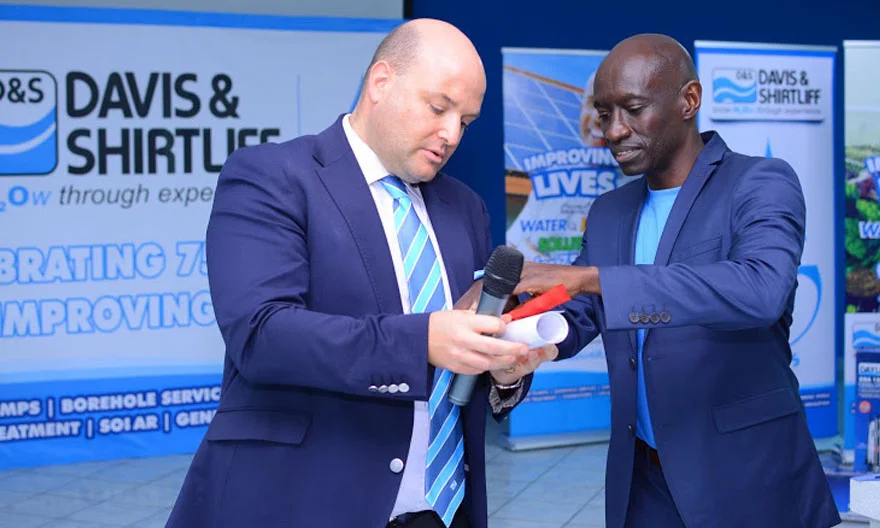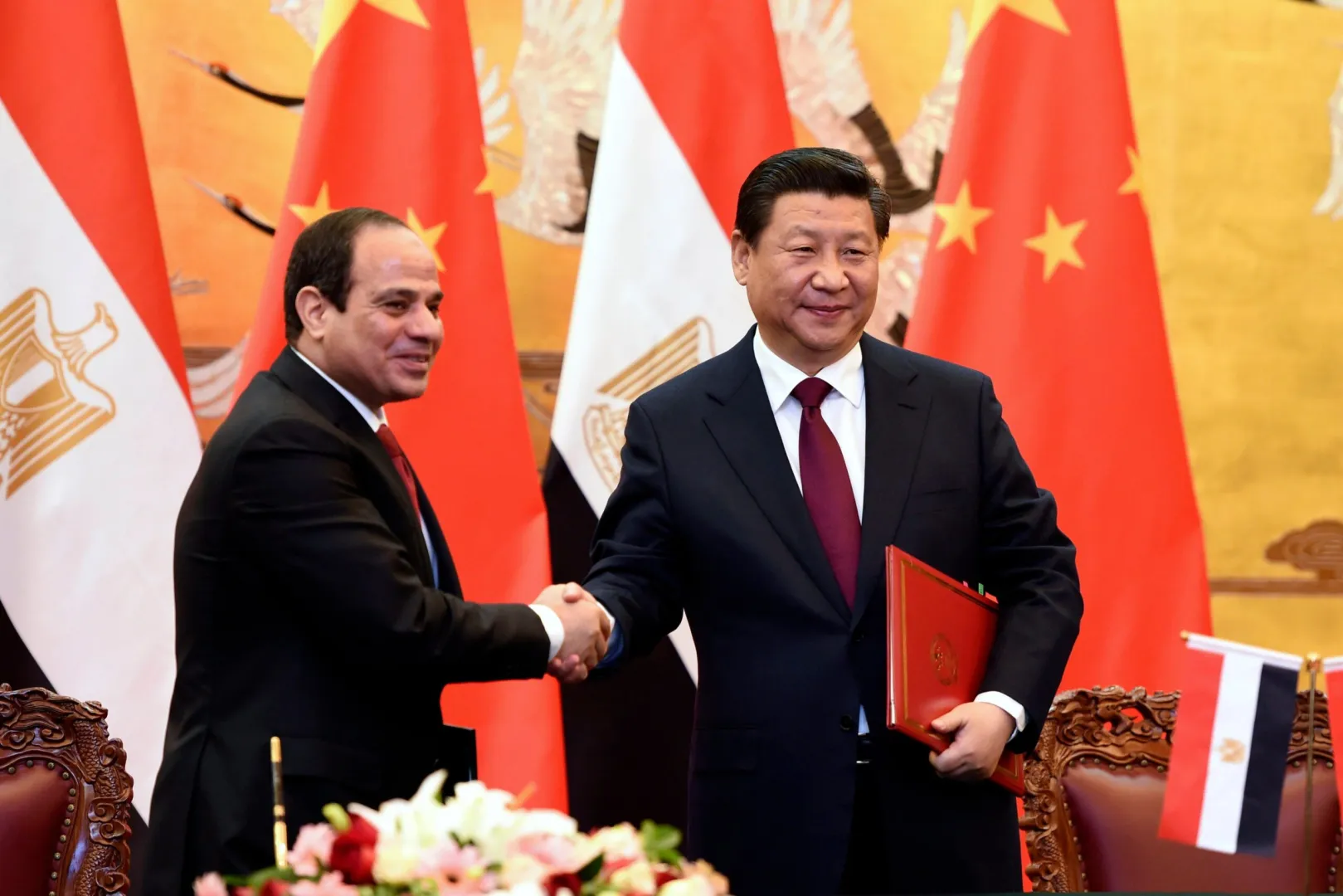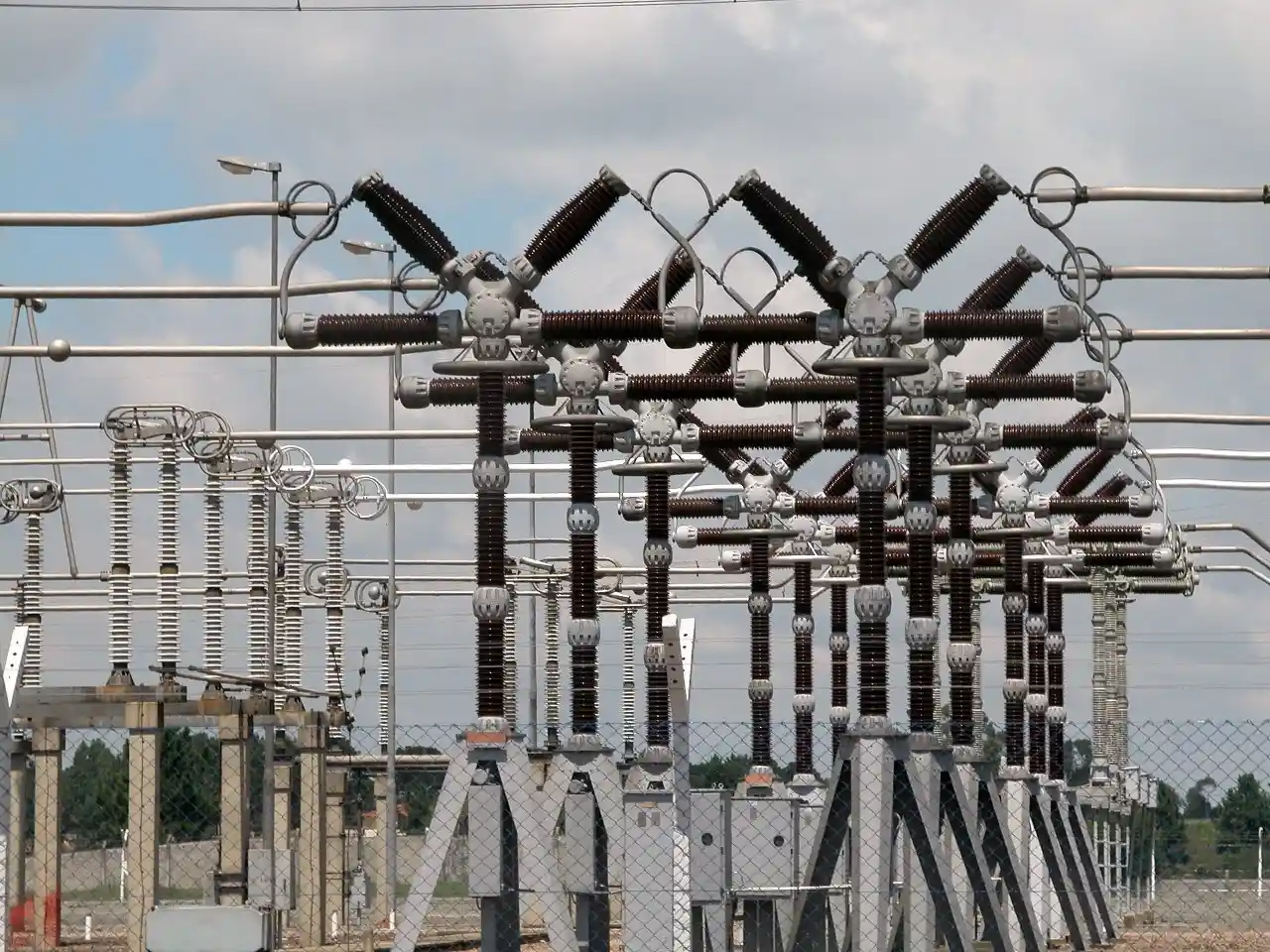Lodwar town in Turkana County has emerged as the pioneering recipient of an innovative modular containerized solar hybrid system that could fundamentally transform how millions of Kenyans living beyond the reach of the national grid access clean, reliable, and affordable electricity. This groundbreaking installation by Davis & Shirtliff, one of East Africa’s leading water and energy solutions providers, represents a scalable approach to addressing Kenya’s persistent electrification challenges in remote and underserved communities.
The installation features a 50 kilowatt (kW) solar hybrid inverter integrated with a 70 kilowatt-hour (kWh) battery storage system—a configuration designed to provide steady, uninterrupted power throughout both day and night cycles. This dual-component approach substantially reduces reliance on diesel generators, which have traditionally powered remote installations but come with punishing operational costs and significant environmental consequences including carbon emissions, noise pollution, and air quality degradation.
Build the future you deserve. Get started with our top-tier Online courses: ACCA, HESI A2, ATI TEAS 7, HESI EXIT, NCLEX-RN, NCLEX-PN, and Financial Literacy. Let Serrari Ed guide your path to success. Enroll today.
A Plug-and-Play Revolution for Remote Energy Access
What distinguishes this system from conventional rural electrification approaches is its modular, containerized design that makes it fundamentally different from traditional infrastructure projects. The entire system arrives fully assembled within standard shipping containers, eliminating the months-long construction periods typically associated with power installations. Transportation becomes straightforward using standard logistics infrastructure, and installation can be completed in days rather than weeks or months—even in the harshest and most isolated environments imaginable.
This plug-and-play architecture has been specifically engineered for deployment in remote locations where conventional construction and installation processes would be prohibitively expensive, logistically complex, or simply impossible given terrain challenges. The system’s versatility makes it ideal for diverse applications including rural communities seeking basic electrification, schools requiring reliable power for digital learning initiatives, clinics needing consistent electricity for medical equipment and vaccine storage, trading centers supporting local commerce, businesses seeking to expand operating hours, and humanitarian operations requiring rapid deployment of essential services.
“This is an important step in delivering clean, reliable energy to areas long without access,” declared Edward Davis, Managing Director of Davis & Shirtliff. “By offering a ready-to-use system, we are helping communities gain electricity faster and more affordably, supporting both economic growth and social development.”
The Staggering Scale of Kenya’s Electrification Challenge
Understanding the significance of this deployment requires grasping the magnitude of Kenya’s ongoing electrification challenge. According to official statistics from the Ministry of Energy, approximately 43 percent of Kenya’s population—representing millions of citizens—remains completely unconnected to the national grid. This disconnection is not evenly distributed: rural areas bear the brunt of this energy poverty, with vast swathes of the countryside lacking any form of reliable electricity infrastructure.
The consequences of this energy deficit ripple through every aspect of life in affected communities. Children study by kerosene lamps, limiting their educational attainment. Clinics operate without refrigeration for vaccines and medicines. Businesses close at sunset, stifling economic activity and income generation. Agricultural productivity suffers without access to powered irrigation or processing equipment. Communication and information access remain limited without charging infrastructure for mobile phones and digital devices.
The [Kenya National Energy Compact 2025-2030](https://energy.go.ke/sites/default/files/Kenya National Energy Compact 22AUG2025 (1).pdf) acknowledges these challenges while outlining ambitious targets. Current electricity access stands at approximately 75 percent nationally, with sharp urban-rural disparities: urban areas enjoy 90 percent access while rural regions lag at 68 percent. Connecting an additional 5.1 million households through both grid and off-grid solutions will be necessary to achieve universal electrification—a target that requires innovative deployment models like the Davis & Shirtliff system.
Why Solar Hybrid Systems Are Emerging as the Optimal Solution
Kenya’s expanding mini-grid and off-grid sector has increasingly converged on solar hybrid systems as the most cost-effective solution for powering remote communities that lie beyond economically viable grid extension range. Several factors drive this technological preference, beginning with Kenya’s abundant solar resources—the country receives high levels of solar irradiation throughout the year, particularly in arid and semi-arid regions like Turkana County where Lodwar is located.
According to the State of the Global Mini-Grids Market 2024 report, funded by UK aid, Kenya needs solar hybrid mini-grids to serve at least 1.3 million people and add 125 megawatts (MW) of generating capacity to achieve universal power access by 2030 through least-cost solutions. This transition represents a substantial investment requirement estimated at approximately $281 million (equivalent to Sh36.53 billion at current exchange rates)—a significant sum but one that pales compared to the cost of extending the national grid to every remote settlement.
The economic case for solar hybrid systems in off-grid contexts rests on multiple pillars. Capital costs per household connection for renewable energy mini-grids deployed in Kenya have been estimated at approximately $1,000 (KES 103,000) according to independent studies—substantially less than grid extension costs in remote areas which can exceed several thousand dollars per connection when accounting for transmission line construction across difficult terrain.
Operational economics also favor solar hybrid configurations. Once installed, solar systems generate electricity with zero fuel costs, contrasting sharply with diesel generators that consume expensive imported fuel requiring complex logistics chains to remote locations. Maintenance requirements for solar-battery systems are minimal compared to mechanical generators with their demands for regular servicing, spare parts, and eventual replacement of worn components.
Environmental considerations increasingly influence energy infrastructure decisions. Solar generation produces zero local emissions, improving air quality in communities previously dependent on diesel generators or kerosene lighting. The climate benefits extend globally, as distributed solar generation displaces fossil fuel consumption and associated carbon emissions—contributions toward Kenya’s climate commitments under international frameworks.
The Transformative Socioeconomic Impact of Reliable Electricity
Extensive research conducted on mini-grid systems deployed across Kenya has documented meaningful socioeconomic transformations in communities gaining access to reliable electricity. These benefits extend far beyond the obvious convenience of lighting, encompassing fundamental improvements across economic, educational, health, and security dimensions.
Studies by institutions including the World Bank and various development organizations have found that household incomes increased by an average of 27 percent within the first year of mini-grid connection. This income growth stems primarily from extended business operating hours—shops, restaurants, and service providers can operate profitably into evening hours when previously they would have closed at sunset. Agricultural productivity improves through powered irrigation, crop processing, and cold storage for perishable products. New economic activities emerge that were previously impossible, including mobile phone charging services, refrigerated goods sales, and electrically powered manufacturing.
Educational outcomes improve markedly with electrification. Students can study effectively in the evening hours, dramatically increasing learning time beyond daylight hours. Schools with reliable electricity can deploy digital learning tools including computers, internet connectivity, and multimedia educational resources. Teacher recruitment and retention improves in electrified areas as living conditions become more attractive.
Health impacts prove equally significant. Clinics with electricity can refrigerate vaccines and medicines, provide lighting for night-time emergencies, sterilize medical equipment, and power diagnostic tools—capabilities that save lives and prevent disease. Maternal and child health outcomes improve when births can be safely attended at health facilities with adequate lighting and equipment.
Safety and security benefits emerge as street lighting and illuminated public spaces deter crime and reduce accidents. Women and girls face fewer risks when able to move about after dark. Social cohesion strengthens as community members gather in lighted public spaces for meetings, recreation, and cultural events previously constrained to daylight hours.
Lodwar’s Energy Journey: Context for the Latest Installation
Lodwar’s relationship with Davis & Shirtliff’s solar hybrid technology actually extends back years before this latest installation, providing valuable context and lessons learned. In a 2015 project documented by The Standard newspaper, Lodwar Water Services Company (LOWASCO) partnered with Davis & Shirtliff and the Japanese Aid Agency (JICA) on a Sh16 million initiative to install solar hybrid borehole pumping systems in three of the utility’s seven borehole fields.
That earlier project addressed a critical economic problem: the exorbitant cost of electricity kept water supply costs unsustainably high, with LOWASCO spending Sh45 to supply each cubic meter of water while charging customers only Sh33—incurring losses of Sh12 per cubic meter. The solar hybrid solution enabled boreholes to pump water using solar energy during daylight hours, switching to grid power only during nighttime when electricity demand and costs are lower.
The installations featured 94 solar panels on one borehole and 144 panels on each of the other two, supplemented by hybrid generators ensuring each borehole could supply between 125 and 250 cubic meters of water daily. Remote monitoring systems tracked water flow rates, current consumption, and available solar radiation, enabling timely maintenance and optimal system performance.
The project’s success validated the solar hybrid approach in Lodwar’s challenging environment. Anthony Karunguru, Davis & Shirtliff’s senior technician for the project, explained the remote monitoring capability: “Each pumping system is fitted with a tracking system so that we can keep tabs on the performance of the solar hybrid pumping systems. We can, therefore, run the diagnostics necessary to keep them at optimum performance by facilitating timely post-installation support.”
The cost savings proved transformative: water tariffs could be maintained at affordable Sh33 per cubic meter while LOWASCO achieved financial sustainability. Encouraged by these results, LOWASCO planned to convert its remaining four boreholes to hybrid pumping systems—a testament to the technology’s demonstrated value proposition.
Davis & Shirtliff had previously undertaken similar solar hybrid installations in other arid and semi-arid counties including Wajir, Isiolo, Machakos, and Moyale, building institutional knowledge about operating these systems in Kenya’s most challenging environments. This accumulated experience directly informs the design and deployment of the newer modular containerized system now installed in Lodwar.
Technical Design for Harsh Environments
The modular containerized system’s engineering reflects deep understanding of the harsh conditions characterizing many off-grid locations in Kenya. Lodwar itself exemplifies these challenges: situated in Turkana County in Kenya’s arid northwest, the town experiences extreme temperatures, dust storms, unreliable road access, and security concerns that have historically complicated development projects.
Davis & Shirtliff’s earlier Lodwar projects required hiring protection officers as security escorts for the journey from Kainuk through Lokichar to Lodwar, with visitors highly susceptible to attacks by armed groups. Equipment transportation from Nairobi, 684 kilometers away, took three days due to poor road conditions—on one occasion requiring airlifting a delicate motor component due to urgency and the item’s fragility.
The containerized system’s design directly addresses these logistical realities. Standard shipping container dimensions mean the system can be transported via existing truck infrastructure despite poor roads. The rugged container construction protects sensitive electronics and components from dust, moisture, temperature extremes, and physical impacts during transportation and operation. Rapid installation minimizes the time security escorts must be maintained and reduces exposure to weather delays.
The 50kW solar capacity combined with 70kWh battery storage provides several critical capabilities. The battery storage ensures power availability throughout the night and during cloudy periods when solar generation drops. The hybrid inverter seamlessly manages power flow between solar panels, batteries, and loads, optimizing system efficiency. Surplus solar generation during peak sun hours charges batteries for later use, while the system can potentially integrate auxiliary power sources like diesel generators for backup during extended low-generation periods—though the goal is to minimize or eliminate such fossil fuel dependency.
System sizing for the 50kW/70kWh configuration reflects careful load analysis appropriate for community-scale applications. A 50kW system can simultaneously power multiple households, small businesses, a clinic, a school, and community facilities—sufficient to transform a small settlement’s development trajectory. The 70kWh battery provides roughly 1.4 hours of full-load power backup, or substantially longer duration for typical usage patterns where loads fluctuate below maximum capacity.
One decision can change your entire career. Take that step with our Online courses in ACCA, HESI A2, ATI TEAS 7, HESI EXIT, NCLEX-RN, NCLEX-PN, and Financial Literacy. Join Serrari Ed and start building your brighter future today.
Scaling Distributed Energy for Universal Access
The modular containerized approach pioneered by Davis & Shirtliff addresses a critical challenge in Kenya’s quest for universal electrification: the economics and logistics of rapidly deploying numerous small-scale generation facilities across vast, dispersed geography. Traditional electrification approaches—whether grid extension or custom-designed mini-grids—require months or years of planning, procurement, construction, and commissioning for each site.
This timeline mismatch creates a deployment bottleneck that prevents Kenya from reaching universal access targets. With millions of households still unconnected and ambitious 2030 deadlines approaching, the country needs to electrify communities faster than conventional methods allow. Plug-and-play modular systems offer a solution: standardized design, factory assembly, simplified logistics, and rapid deployment can potentially electrify dozens or hundreds of communities in the time traditional approaches would serve a handful.
The Kenya Off-Grid Solar Access Project (KOSAP), launched in 2019 by the Ministry of Energy with World Bank funding, provides context for the scale of deployment required. KOSAP targets fourteen counties in Kenya’s northeastern and coastal regions, including Turkana, with ambitious goals: installing 250,000 standalone solar home systems and 120 mini-grids by 2030. The project budget of $150 million reflects the substantial but achievable investment needed to transform energy access across vast underserved regions.
These ambitious targets require not just funding but deployment mechanisms capable of rapid, reliable implementation. Modular systems like the Davis & Shirtliff solution offer exactly this capability—each installation can be completed in days rather than months, manufacturing can be scaled through industrial production rather than custom fabrication, and standardization ensures consistent quality and performance across deployments.
The containerized format also enables intriguing possibilities for scaling and upgrading. Communities experiencing demand growth can add additional container units rather than replacing entire systems—a modular expansion approach that protects initial investments while accommodating development. As battery and solar technologies continue improving, containers can potentially be upgraded with newer components without complete system replacement.
Policy and Regulatory Framework Supporting Off-Grid Development
Kenya’s off-grid energy sector operates within an evolving policy and regulatory framework that increasingly recognizes distributed renewable generation as essential for universal access. The Energy Act of 2019 established the Rural Electrification and Renewable Energy Corporation (REREC) with a central mandate to promote and develop off-grid solutions through financial support, policy advocacy, and technical assistance to communities and companies.
The Energy and Petroleum Regulatory Authority (EPRA) regulates the off-grid sector through licensing, economic and technical regulation, enforcement, compliance monitoring, and dispute resolution. EPRA’s framework ensures safety and quality standards while attempting to balance regulation with innovation encouragement—a delicate equilibrium as the sector evolves rapidly.
Important policy instruments support off-grid development. Tax breaks including waived import duties and VAT on solar photovoltaic products make clean energy technologies more affordable for Kenyan consumers and developers. The Energy (Mini-Grid) Regulation of 2021 establishes a clear framework for mini-grid development, licensing, and operation—providing regulatory certainty that encourages private investment.
The Ministry of Energy formulates sector policies and guidelines, with the Kenya National Electrification Strategy (KNES) providing a roadmap to universal access prioritizing least-cost approaches. This strategy explicitly recognizes that off-grid solutions—mini-grids and standalone systems—will electrify many of the remaining unconnected households more economically than grid extension.
Feed-in tariffs, though primarily designed for grid-connected renewable generation, have helped establish pricing frameworks and demonstrated government commitment to renewable energy. This policy environment, while imperfect and continuing to evolve, provides more certainty and support than existed a decade ago when off-grid development faced regulatory ambiguity and minimal government engagement.
Private Sector Innovation and Investment
Davis & Shirtliff’s solar hybrid system launch exemplifies how private sector innovation complements public sector infrastructure development in Kenya’s electrification journey. As a Kenyan multinational with operations across East Africa—including Uganda, Tanzania, Zambia, Rwanda, Ethiopia, South Sudan, Somalia, Burundi, and DRC—Davis & Shirtliff brings regional scale and accumulated technical expertise spanning decades of operating in challenging African environments.
The company’s evolution from its 1946 founding as a water supply contracting company to its current position as a leading distributor of water and energy equipment reflects Kenya’s development trajectory. Its extensive branch network of 35 locations in Kenya alone provides geographic reach and local presence essential for serving remote communities with ongoing maintenance and support requirements.
The modular containerized system represents significant R&D investment and risk-taking characteristic of private sector innovation. Unlike public procurement of established technologies, developing and commercializing novel deployment approaches requires capital investment, technical development, market risk, and willingness to iterate based on field experience. Davis & Shirtliff’s willingness to make these investments stems from confidence in market opportunity: millions of potential customers, supportive government policies, and growing recognition of off-grid solutions’ economic viability.
Other private companies have similarly invested in Kenya’s off-grid sector, creating a competitive ecosystem that drives innovation, improves quality, and reduces costs. Companies like PowerGen, Powerhive, SteamaCo, and M-KOPA have deployed diverse approaches to rural electrification—from solar home systems to community mini-grids—each contributing to the sector’s vibrancy and learning.
This private sector engagement increasingly attracts impact investors and development finance institutions viewing off-grid energy as offering both financial returns and development impact. The African Development Bank, European development agencies, and climate finance mechanisms have channeled substantial capital toward off-grid projects, recognizing their role in climate mitigation, development acceleration, and poverty reduction.
Challenges and Critical Success Factors
Despite promising technology and supportive trends, scaling off-grid electrification faces persistent challenges that deployment speed will ultimately depend on addressing. Revenue collection in poor, dispersed rural communities remains difficult—customers with irregular income from agriculture or informal activities may struggle with consistent payment, while collection infrastructure in remote areas adds costs. Many off-grid developers struggle with achieving financial sustainability, requiring subsidies or patient capital willing to accept below-market returns during long payback periods.
Demand forecasting proves notoriously difficult in newly electrified communities. Developers must estimate how quickly consumption will grow as communities adapt to electricity availability and new electrical appliances become accessible. Underestimating demand leads to oversized, financially unviable systems; underestimating leaves customers unsatisfied and constrains development impact.
Maintenance and technical support requirements extend indefinitely but rural operations face severe logistic and cost challenges. Systems require periodic servicing, component replacements, and occasional repairs—all requiring trained technicians traveling to remote locations with spare parts. Companies developing viable maintenance business models while keeping customer costs affordable must balance competing pressures.
Financing remains a fundamental constraint. While the $281 million investment requirement for meeting Kenya’s mini-grid needs appears manageable nationally, mobilizing this capital requires overcoming investor perceptions of high risk in emerging markets, rural settings, and novel technologies. Blended finance combining grants, concessional debt, and commercial capital offers one approach, as do results-based financing mechanisms rewarding successful connections rather than just infrastructure deployment.
Policy and regulatory uncertainty persists despite improvements. Tariff regulation, licensing requirements, grid extension planning coordination, and subsidy mechanisms continue evolving—creating investment hesitancy when rules may change. Clearer, more stable long-term frameworks would accelerate private capital deployment.
The Broader Context: Kenya’s Renewable Energy Leadership
Kenya’s off-grid solar push occurs within a broader context of renewable energy leadership positioning the country as an African clean energy pioneer. According to the [Kenya National Energy Compact](https://energy.go.ke/sites/default/files/Kenya National Energy Compact 22AUG2025 (1).pdf), geothermal has been the leading contributor to Kenya’s generation mix, maintaining 39-47 percent of generation in recent years. Hydropower contributes 19-25 percent depending on rainfall patterns. Wind power reached 16.57 percent in 2022/23, while solar energy has gradually increased to 3.46 percent in 2023/24.
This clean energy dominance positions Kenya favorably for climate goals while demonstrating technical and institutional capacity for managing variable renewable generation. The same expertise deployed for geothermal, wind, and hydropower development transfers to distributed solar—grid integration, forecasting, maintenance, and financing all share common elements across renewable technologies.
Kenya’s clean energy success attracts international attention and investment. The country is frequently cited in global reports as a renewable energy success story and innovation hub for development-oriented business models. This reputation creates positive feedback loops: recognition attracts investment, successful projects generate case studies and data improving future project design, and demonstrated impact encourages policy support and scaling.
Looking Forward: Pathways to Universal Access
Achieving universal electricity access by 2030 requires maintaining and accelerating current momentum while addressing persistent challenges. The modular solar hybrid system deployed in Lodwar by Davis & Shirtliff represents one crucial piece of a complex puzzle requiring many complementary efforts.
Continued policy refinement supporting off-grid development remains essential. Streamlined licensing, appropriate tariff regulation, transparent subsidy allocation, and coordination between grid extension planning and off-grid development would all accelerate deployment. Results-based financing mechanisms rewarding successful long-term operation rather than just initial connection could improve project sustainability.
Innovative financing mechanisms must expand. Blended finance, impact investment, carbon finance, and specialized debt facilities can mobilize capital at scales required for rapid deployment. Lowering financing costs through guarantee mechanisms, currency hedging facilities, and other risk mitigation tools would improve project economics.
Technology continued improvement will help but is not sufficient alone. While solar panels and batteries continue becoming more efficient and affordable, deployment bottlenecks involve human and institutional capacity more than technology limitations. Training technicians, building management systems, developing business models, and establishing supply chains matter as much as hardware improvements.
Community engagement and ownership models deserve attention. Projects incorporating community participation in planning, implementation, and ongoing management often achieve better outcomes than purely external implementations. Cooperative ownership structures, local employment, and culturally appropriate engagement can transform projects from external impositions to community-owned assets.
Productive use stimulation—helping communities develop electricity-using economic activities—can improve project financial sustainability while maximizing development impact. Projects teaching communities about irrigation, food processing, cold storage, or small manufacturing enable them to derive greater value from electricity access while generating revenue supporting system operation.
Conclusion: Lighting the Path to Universal Access
The Davis & Shirtliff modular containerized solar hybrid system deployed in Lodwar represents more than a single installation—it embodies an approach to rural electrification that could accelerate Kenya’s progress toward universal access goals. By dramatically reducing deployment timelines, simplifying logistics, and providing plug-and-play functionality, this technology addresses critical bottlenecks that have historically slowed off-grid electrification.
The 43 percent of Kenyans still without grid electricity represent millions of people whose lives, livelihoods, education, health, and opportunities remain constrained by energy poverty. Closing this gap by 2030 demands innovation in technology, financing, policy, and implementation—exactly the multifaceted approach Davis & Shirtliff and numerous partners across government, development, and private sectors are pursuing.
Success will require sustained commitment, continued innovation, adequate financing, and adaptation based on implementation experience. The Lodwar installation provides valuable learning that can inform hundreds of subsequent deployments, each bringing transformative energy access to communities long denied this fundamental development building block.
As Kenya charts its path toward universal electrification, solutions like modular solar hybrid systems illuminate not just individual communities but pathways other African nations might follow. The continent faces massive electrification challenges—hundreds of millions without electricity access—but also possesses abundant solar resources and increasingly viable technologies for distributed generation. Kenya’s experience pioneering mobile money, off-grid solar, and distributed electrification offers lessons and inspiration for neighbors embarking on similar journeys.
The light switching on in Lodwar through Davis & Shirtliff’s solar hybrid system represents progress toward a future where every Kenyan, regardless of location, enjoys access to clean, reliable, affordable electricity—the foundation for education, health, economic opportunity, and dignified life in the twenty-first century.
Ready to take your career to the next level? Join our Online courses: ACCA, HESI A2, ATI TEAS 7 , HESI EXIT , NCLEX – RN and NCLEX – PN, Financial Literacy!🌟 Dive into a world of opportunities and empower yourself for success. Explore more at Serrari Ed and start your exciting journey today! ✨
Track GDP, Inflation and Central Bank rates for top African markets with Serrari’s comparator tool.
See today’s Treasury bonds and Money market funds movement across financial service providers in Kenya, using Serrari’s comparator tools.
Photo source: Google
By: Montel Kamau
Serrari Financial Analyst
11th November, 2025
Article, Financial and News Disclaimer
The Value of a Financial Advisor
While this article offers valuable insights, it is essential to recognize that personal finance can be highly complex and unique to each individual. A financial advisor provides professional expertise and personalized guidance to help you make well-informed decisions tailored to your specific circumstances and goals.
Beyond offering knowledge, a financial advisor serves as a trusted partner to help you stay disciplined, avoid common pitfalls, and remain focused on your long-term objectives. Their perspective and experience can complement your own efforts, enhancing your financial well-being and ensuring a more confident approach to managing your finances.
Disclaimer: This article is for informational purposes only and does not constitute financial advice. Readers are encouraged to consult a licensed financial advisor to obtain guidance specific to their financial situation.
Article and News Disclaimer
The information provided on www.serrarigroup.com is for general informational purposes only. While we strive to keep the information up to date and accurate, we make no representations or warranties of any kind, express or implied, about the completeness, accuracy, reliability, suitability, or availability with respect to the website or the information, products, services, or related graphics contained on the website for any purpose. Any reliance you place on such information is therefore strictly at your own risk.
www.serrarigroup.com is not responsible for any errors or omissions, or for the results obtained from the use of this information. All information on the website is provided on an as-is basis, with no guarantee of completeness, accuracy, timeliness, or of the results obtained from the use of this information, and without warranty of any kind, express or implied, including but not limited to warranties of performance, merchantability, and fitness for a particular purpose.
In no event will www.serrarigroup.com be liable to you or anyone else for any decision made or action taken in reliance on the information provided on the website or for any consequential, special, or similar damages, even if advised of the possibility of such damages.
The articles, news, and information presented on www.serrarigroup.com reflect the opinions of the respective authors and contributors and do not necessarily represent the views of the website or its management. Any views or opinions expressed are solely those of the individual authors and do not represent the website's views or opinions as a whole.
The content on www.serrarigroup.com may include links to external websites, which are provided for convenience and informational purposes only. We have no control over the nature, content, and availability of those sites. The inclusion of any links does not necessarily imply a recommendation or endorsement of the views expressed within them.
Every effort is made to keep the website up and running smoothly. However, www.serrarigroup.com takes no responsibility for, and will not be liable for, the website being temporarily unavailable due to technical issues beyond our control.
Please note that laws, regulations, and information can change rapidly, and we advise you to conduct further research and seek professional advice when necessary.
By using www.serrarigroup.com, you agree to this disclaimer and its terms. If you do not agree with this disclaimer, please do not use the website.
www.serrarigroup.com, reserves the right to update, modify, or remove any part of this disclaimer without prior notice. It is your responsibility to review this disclaimer periodically for changes.
Serrari Group 2025












